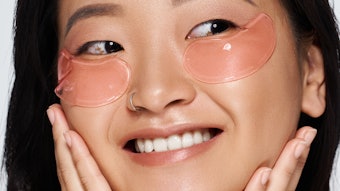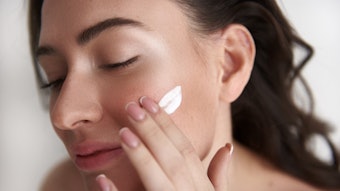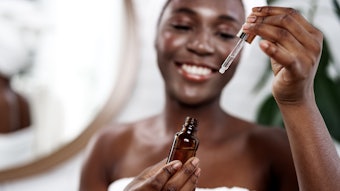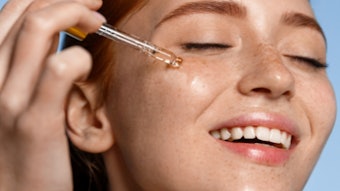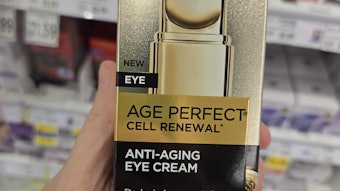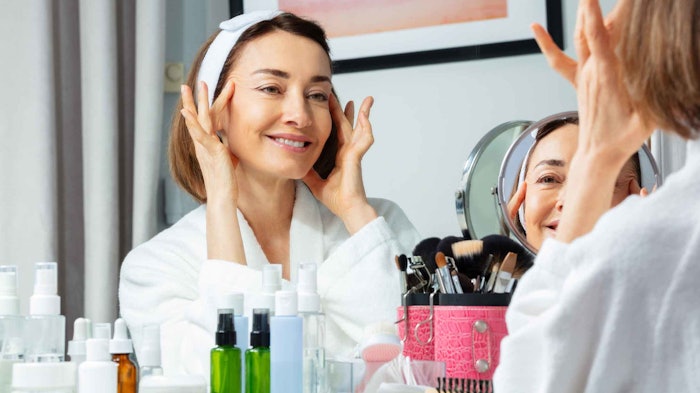
Biological/physiological and environmental factors are well-established causes of skin aging;1 other recent additions include psychological, behavioral and social processes.2 Along with chronological aging, UV radiation in particular has long been known to cause visible skin aging. It does so by damaging DNA and altering the cellular antioxidant balance, signal transduction pathways, skin immunology and the extracellular matrix.3
Log in to view the full article
Biological/physiological and environmental factors are well-established causes of skin aging;1 other recent additions include psychological, behavioral and social processes.2 Along with chronological aging, UV radiation in particular has long been known to cause visible skin aging. It does so by damaging DNA and altering the cellular antioxidant balance, signal transduction pathways, skin immunology and the extracellular matrix.3
Scores of studies into lifestyle choices such as smoking, sleeping habits (or lack thereof), poor diet, excessive screen time, etc., show these to be additional risk factors in the premature aging of organs – of which skin is the largest. And, in recent years, psychodermatology has piqued the interest in cosmetics R&D. In fact, according to board-certified dermatologist and psychiatrist John Koo, M.D., psychodermatology is highly relevant to skin aging as there is ample evidence documenting that emotional stress is just as detrimental to skin as physical stress or chronological aging.4
Yet another factor that plays a vital role in aging and overall health is circadian rhythm. Prolonged disruptions to this clock are associated with negative health consequences. For example, according to Hood and Amir, the circadian system undergoes significant changes with aging that affect rhythms for activity/rest, adaptability to dark/light schedule changes, temperature regulation, hormone (e.g., cortisol) and melanin release, metabolism and inflammation, among others.5 Many of these factors are also known to affect skin – and conversely, the skin contains circadian clock genes that play a role in the regulation of the circadian rhythm.6
These variables, combined with the lowered levels of collagen, elastin, HA and moisture that occur naturally over time, demonstrate that skin aging is a multi-layered, multifaceted process. This reinforces the need for a combined approach for truly effective anti-aging results. Such a strategy was adopted to develop a multifunctional antioxidant seruma that counters several of the symptoms of skin aging described here, in turn supporting skin health and providing both a “prejuvenation” and rejuvenation solution.
This case study explains the rationale for choosing ingredients with different efficacies to build a multifunctional serum to reduce signs of photoaging. Tests carried out by the ingredient suppliers are outlined, including free radical scavenging and skin defense, normalization of keratinocyte renewal/rhythm, increased HA production, HA/PGA moisture boost and ceramide reinforcement. Additional proprietary third-party tests (not shown) confirmed the safety and efficacy of the final serum.
Optimizing Vitamin C Efficacy
Intracellular and extracellular oxidative stress initiated by reactive oxygen species (ROS) advances skin aging, characterized by wrinkles and atypical pigmentation. In fact, since UV greatly enhances ROS generation in cells, skin aging is often described in relation to UV exposure – i.e., photoaging. Recently, increasing evidence also has arisen suggesting high-energy visible light, or blue light, and infrared significantly contribute to photoaging.7 Antioxidants are an effective approach to prevent symptoms related to photo-induced aging8 since they act as a first line of defense, neutralizing free radicals and oxidative damage.
Vitamin C is perhaps the most researched and arguably most effective non-enzymatic topical antioxidant. Its widely accepted benefits for general health and skin were observed as early as 1937, when vitamin C deficiency was identified as the principal cause of scurvy – a discovery that led to a Nobel Prize for Albert Szent-Györgyi, M.D. The positive effects of vitamin C for skin have been proven time and time again, including improving discoloration and boosting collagen production. This has made it a popular ingredient in over-the-counter cosmeceuticals; in fact, in 2023, vitamin C was reportedly the most-searched skin care ingredient.9
There are many forms of vitamin C, each with advantages and disadvantages. Generally speaking, L-ascorbic acid (LAA) is the most biologically but it is unstable, oxidizing easily and losing its benefits quickly. The hydrophilic nature of LAA also prevents its easy penetration through the hydrophobic stratum corneum. As such, several chemically modified derivatives of vitamin C have been developed in attempt to increase its stability, percutaneous absorption and overall activity in topical formulations.10
LAA-GSH-Au Conjugate
For the development of the described anti-aging serum, a material was chosen that conjugates LAA and glutathione (GSH) to submicrometric gold particles and thereby improves the stability of LAA (see Figure 1, below). Encapsulation and conjugation are both strategies in drug delivery and biomedical applications to improve the bioavailability and therapeutic index of medicine and/or active ingredients in skin care.
In this case, gold submicrometric particles were chosen for their demonstrated ability to protect sensitive molecules such as vitamin C from premature degradation while also enhancing skin penetration.11 Additionally, non-animal studies of the gold particles examining cytotoxicity (in HDF and HaCaT keratinocytes using MTT), genotoxicity (Ames test), ocular irritation (HET-CAM) and HRIPT (n = 50; duration: 3 weeks) found them to be nontoxic to human skin cells.12 They were therefore deemed safe for use in topical skin care (not shown).
From a structural perspective, the LAA is conjugated to gold submicrometric particles via the very -OH groups responsible for its sensitivity to oxidation, thereby protecting it and boosting its chemical stability. Furthermore, GSH, a well-known antioxidant that works in synergy with LAA, was incorporated to modulate the redox activity of LAA, in turn inhibiting LAA pro-oxidant processes while boosting its antioxidant function.13 More specifically, H2O2 and dehydroascorbic acid (DHA) are generated as the result of LAA’s antioxidant activity. To counter this, GSH consumes H2O2, preventing its accumulation as well as DHA’s re-conversion back to LAA. It also helps to regenerate LAA within cells.
Materials and Methods: Stability, Penetration, Antioxidant and Protectant Benefits
The chemical stability, skin penetration, free radical-scavenging and protective properties of the novel AA conjugate were tested by the supplier in various ways. Note that all in vitro and in vivo studies were conducted using the same concentration, and since the amount of LAA in the conjugated molecule is only 0.02%, the relative concentration of LAA was lower than that of the free actives used as reference – e.g., at 0.5% LAA-GSH-Au conjugate vs. free AA at 0.5%, the AA content of the conjugate is 0.0001% compared with 0.5% of the free AA.
Chemical stability: The chemical stability of the novel AA was tested in powder form, in water and in an o/w emulsion using HPLC and compared with free AA. Results showed 100% stability after six months at 40°C while the stability of free AA lasted only 48 hr in water and two weeks in an o/w emulsion (see Figure 2, below).
Skin penetration: The ability of the novel AA versus free AA to penetrate skin was assessed by fluorescence in a Franz cell/pig skin penetration study. Briefly, the pig skin, previously cut into 3-cm diameter circles, was positioned on the receptor compartment of the Franz cell with the stratum corneum side facing upward into the donor compartment. From the donor compartment, a solution was added containing free AA or the AA conjugate.
The solution permeated from the skin was collected and analyzed by fluorescence spectroscopy to quantify the amount of active ingredient that penetrated. The cell was kept at 32ºC and the receptor solution was collected and analyzed at different time points: 0 min, 30 min, 1 hr, 2 hr, 4 hr, 8 hr, 16 hr and 20 hr. Kinetic profiles were built and the data results were represented as a percentage of the total amount of active loaded.
Results indicated the novel AA absorbed into the skin with 100% efficiency at 20 hr, compared with free AA at ~40% at 20 hr (see Figure 3, below).
Antioxidant activity: A DPPH assay was carried out to compare the number of free radicals scavenged by the novel AA and other AA derivatives, all at the same concentration (0.03%). The AA conjugate and free AA were first diluted, to which 250 μL of 0.1 mM DPPH solution was added. The mixture was ultrasonicated twice for 3 min, to promote the reaction among the conjugate and DPPH, and incubated in the dark for 30 min. Following this, the mixture was centrifuged at 10,000 rpm for 2 min and the supernatant was collected and analyzed. UV/vis absorption measurements were performed at 517 nm to determine the final concentration of DPPH; the percentage of free radical scavenged is directly related to the amount of DPPH consumed.
The novel AA showed higher free radical scavenging efficiency (100%) than free AA (45%) and all the other AA derivatives, which, per the supplier, is likely due to the presence of the conjugated GSH (see Figure 4, below).
Ozone, UV and blue/visible light protection: Finally, an in vivo study enlisted 50 healthy females, 22 to 57 years of age, to determine the ability of the novel AA vs. free AA to protect skin. Skin β-carotene levels were measuredb before and after subjects applied a prototype emulsion containing the novel AA or free AA and were exposed to 15 controlled exposures to ozone, UV light and visible violet/blue light, respectively. The novel AA formula was two to three times more effective than free AA, counteracting 70% of β-carotene loss induced by ozone; 50% of the loss induced by UV radiation; and 40% of the loss induced by blue light (see Figure 5, below).14
Maintaining Keratinocyte Renewal Rhythm
As noted, the skin contains circadian clock genes that help to regulate the circadian rhythm.6 Indeed, trans-epidermal water loss, keratinocyte proliferation, skin blood flow and skin temperature all demonstrate circadian variations.15 To counter skin aging symptoms caused by circadian rhythm disruptions, L-glutamylamidoethyl imidazole (LGI) was incorporated into the antioxidant serum.
LGI is a chronopeptide that, per the supplier, mimics the activation of circadian genes upon sun exposure, stimulating vitamin D production – especially in skin lacking sun exposure – and triggering the skin’s natural defenses. Supplier testing in reconstructed epidermis showed this peptide equally induced periodic keratinocyte renewal in a dark environment or under sun exposure (see Figure 6, below).16
HA/PGA Moisture Boost for Barrier Maintenance
Hyaluronic acid (HA) is abundant in both the epidermis and dermis but as is well-known, its levels naturally decrease with age.17 According to one study,18 this could be due in part to raised cortisol levels. Here, the authors proposed the atherogenicity of cortisol and stress may affect the synthesis of HA by the smooth muscle cells of the arterial wall.
The researchers found that even when cortisol levels only slightly exceeded the physiological concentration (10-6 M), the synthesis of HA was decreased by 50% via the inhibition of HAS3 expression. Such a reduction translates to a reduced capacity to retain moisture and leads to the typical dryness in aging skin that can impair epidermal barrier function.18
It is known that different molecular weights of HA penetrate the skin to various depths for diverse effects. Low molecular weight HA, for example, generally possesses anti-inflammatory and aging symptoms relief, while high molecular weight HA deposits as a film on the skin surface, providing hydrating and conditioning functions. Both types were incorporated into the multifunctional serum under development.
Furthermore, a medium molecular weight (150 to 600 kDa) HA (MMW HA) was included in the serum to target keratinocytes in the basal lamina of the epidermis. Per the supplier, qRT-PCR showed this material can prevent the inhibition of HAS3 gene transcription to counteract the negative effect of cortisol on HA production in a dose-response manner (see Figure 7, below). Thus, MMW HA could ensure good keratinocyte proliferation to optimize epidermal thickness for well-protected and hydrated skin.19
Soluble Ceramide to Reinforce the Barrier
In parallel with HA, ceramide is widely known to reinforce the natural lipid barrier of dry and aged skin while maintaining moisture balance. Indeed, ceramides are the body's natural moisturizer. They are found in high concentrations (> 50%) in the uppermost layers of skin and help to fortify its protective barrier. Additionally, ceramides rejuvenate skin’s appearance, keeping it firm and plump.
Ceramides were therefore incorporated into the serum. However, they exhibit low solubility in water and oil,20 and although they can be solubilized by conventional emulsification, issues arise including coagulation, flocculation, coalescence and creaming due to their recrystallization behavior.
To resolve these issues, a highly water-dispersible ceramide exhibiting no recrystallization was identified and used in the serum’s development. The ceramide is produced as a powder via a lecithin-based solid lipid particulation technology that makes it easier to handle and use, without the need for solvents, and ultimately produces higher ceramide content (see Figure 8, below).21
Formulation Tweaks, and Safety and Efficacy Testing
As would be expected, throughout the product development process, tweaks were made to boost efficacy as well as balance the serum’s synthetic vs. natural content. Terminalia ferdinandiana fruit (Kakadu plum) extract, for example, was added to create a more holistic natural/synthetic product balance. Kakadu plum is reportedly the richest naturally occurring source of vitamin C worldwide.22, 23
It additionally contains vitamins A and E and polyphenols (gallic and ellagic acids) that boost antioxidant, skin brightening and anti-aging activities. In addition, polyglutamic acid (PGA) extracted from fermented Japanese soybeans (natto) was incorporated into the serum thanks to its ability to retain up to 5,000× its weight in water – compared with HA’s 1,000× capacity.
As noted, third-party testing confirmed the safety and efficacy of the final serum. Testing also supported claims for the product’s preventive or complexion maintenance effects, as well as its ability to mitigate mild to moderate skin conditions (not shown – proprietary information).
Conclusions
Skin aging is a multifaceted process that can benefit from multilayered solutions such as the anti-aging serum case study described here. Notably, advances in ingredient technologies, e.g., to improve stability, boost penetration, enhance efficacy, etc., provide the critical building blocks to assemble such effective multifunctional solutions that meet consumer needs.
a Max-C is a product of derma-Rx and winner of the 2022 C&T Allē Award for Most Significant Anti-aging/Well Aging Formula in the prestige category; see Ingredient Disclosure sidebar for full ingredient list.
b Biozoom technology
References
1. National Institutes on Aging. (Accessed 2023, Dec 27). Understanding the dynamics of the aging process. Available at https://www.nia.nih.gov/about/aging-strategic-directions-research/understanding-dynamics-aging
2. Hood, S. and Amir, S. (2017, Feb 1). The aging clock: Circadian rhythms and later life. J Clin Invest. Available at https://www.ncbi.nlm.nih.gov/pmc/articles/PMC5272178/
3. Bosch, R., Philips, N., … González, S., et al. (2015, Jun). Mechanisms of photoaging and cutaneous photocarcinogenesis, and photoprotective strategies with phytochemicals. Antioxidants. Available at https://www.ncbi.nlm.nih.gov/pmc/articles/PMC4665475/
4. Koo, J. (2022, May 1). Industry insight: Stress vs. strain, and cosmetics to enhance an alternate reality. Cosm & Toil. Available at https://www.cosmeticsandtoiletries.com/magazine/article/22197786
5. Ibid Ref 1
6. Zanello, S.B., Jackson, D.M. and Holick, M.F. (2000). Expression of the circadian clock genes clock and period1 in human skin. J Invest Dermatol. 115(4) 757-760.
7. Nakashima, Y., Ohta, S. and Wolf, A.M. (2017, Jul). Blue light-induced oxidative stress in live skin. Free Radic Biol Med. 108 300-310.
8. Masaki, H. (2010, May). Role of antioxidants in the skin: Anti-aging effects. J Dermatol Sci. 58(2) 85-90.
9. Kilikita, J. (2023, Oct 16). Why vitamin C is falling out of favor among skin care experts. Refinery 29. Available at https://www.refinery29.com/en-gb/vitamin-c-skincare-benefits-side-effects
10. Enescu, C.D., Bedford, L.M., Potts, G. and Fahs, F. (2022, Jun). A review of topical vitamin C derivatives and their efficacy. J Cosmet Dermatol. 21(6) 2349-2359.
11. Fathi-Azarbayjani, A., Qun, L., Chan, Y.W. and Chan, S.Y. (2010 Jul). Novel vitamin and gold-loaded nanofiber facial mask for topical delivery. AAPS PharmSciTech. Available at https://link.springer.com/article/10.1208/s12249-010-9475-z
12. Sonavane, G., Tomoda, K., … Makino, K., et al. (2008). In vitro permeation of gold nanoparticles through rat skin and rat intestine: Effect of particle size. Colloids Surf B Biointerfaces. Available at https://www.sciencedirect.com/science/article/abs/pii/S0927776508000854
13. Rinnerthaler, M., Bischof, J., Streubel, M.K., Trost, A. and Richter, K. (2015). Oxidative stress in aging human skin. Biomolecules. Available at https://www.mdpi.com/2218-273X/5/2/545
14. Infinitec. Internal technical information.
15. Lyons, A.B., Moy, L., Moy, R. and Tung, R. (2019, Sep). Circadian rhythm and the skin: A review of the literature. J Clin Aesthet Dermatol. 12(9) 42-45.
16. Exsymol. Internal technical information.
17. Sakai, S., Yasuda, R., Sayo, T., Ishikawa, O. and Inoue, S. (2000, Jun). Hyaluronan exists in the normal stratum corneum. J Invest Dermatol. 114(6) 1184-7.
18. Verdier-Sévrain, S. and Bonté, F. (2007). Skin hydration: A review on its molecular mechanisms. J Cosmet Dermatol. 6 75-82.
19. Exsymol. Internal technical information.
20. Goñi, F.M., Contreras, F.-X., Montes, L.-R., Sot, J. and Alonso, A. (2005). Biophysics (and sociology) of ceramides. Available at https://pubmed.ncbi.nlm.nih.gov/15649141/
21. Solus Biotech. Internal technical information.
22. Konczak, I., Zabaras, D., Dunstan, M. and Aguas, P. (2010). Antioxidant capacity and hydrophilic phytochemicals in commercially grown Australian fruits. Food Chem. 123 1048-54.
23. Netzel, M., Netzel, G., Tian, Q., Schwartz, S. and Konczak, I. (2007). Native Australian fruits – A novel source of antioxidants for food. Innov Food Sci Emerg Technol. 8 339-46.




